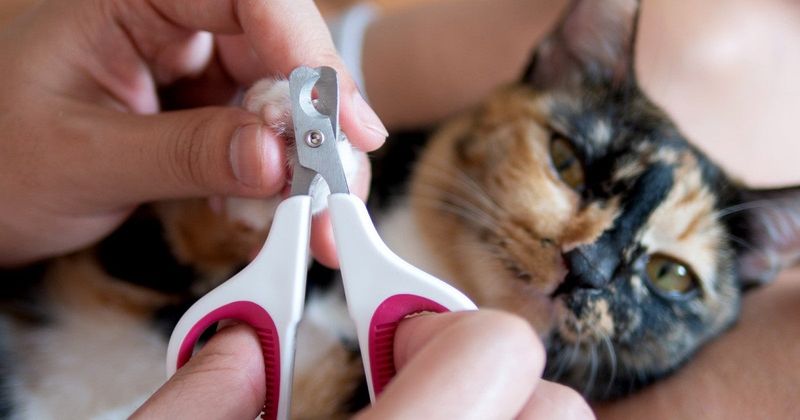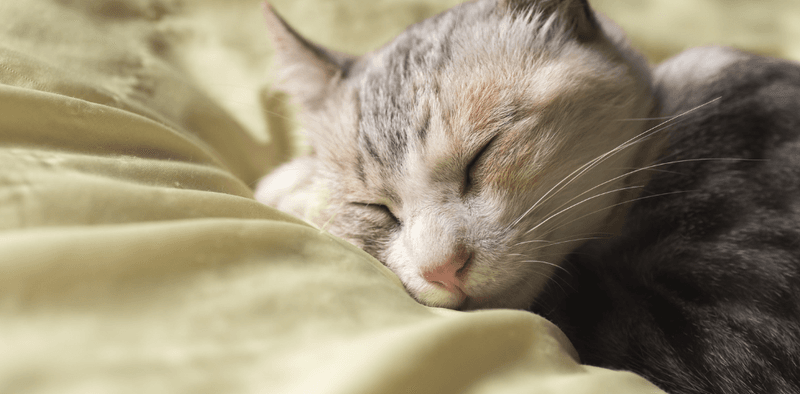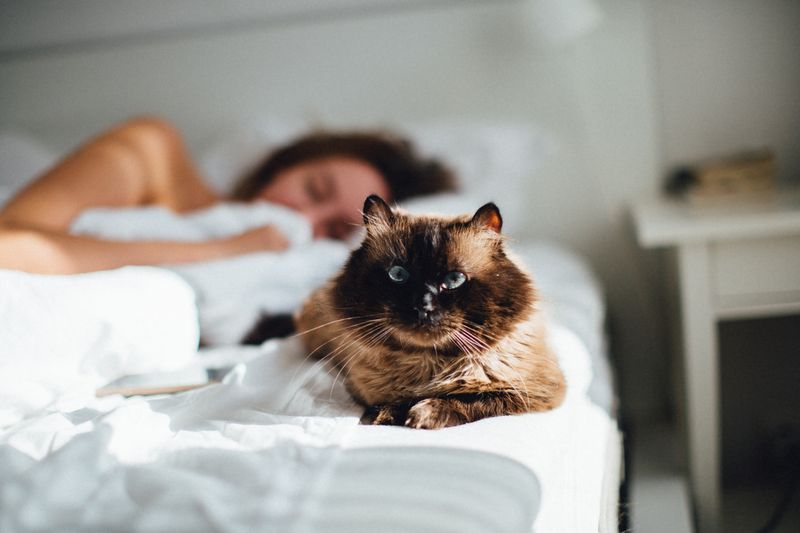📖 Table of Content:
For many cat lovers, there’s nothing cozier than curling up under the covers with a purring feline by their side. Sharing a bed with your cat can be a sweet, bonding experience — a ritual of trust and companionship. But let’s be honest: cats have a talent for turning peaceful slumber into a nightly obstacle course, complete with surprise paw attacks and 3 a.m. zoomies.
As much as we adore them, our furry friends don’t always follow human sleep etiquette. They nap in unpredictable patterns, crave midnight snacks, and sometimes treat our faces as pillows. While some pet parents learn to tolerate the disruption, others find themselves sacrificing sleep to maintain the bond.
Fortunately, you don’t have to choose between cuddles and REM cycles. With a few mindful adjustments, it’s entirely possible to enjoy nightly snuggles without sacrificing rest. Here are seven smart and practical ways to sleep peacefully beside your cat — without getting walked on, meowed at, or pawed awake.
1. Create a Designated Cat Sleep Zone
Designating a specific sleep space for your cat within your bed can help maintain your personal comfort zone. Instead of allowing your cat to sleep wherever they please, try introducing a cozy blanket or pet bed at the foot of your mattress. You might even sprinkle a bit of catnip there at first to make the area more appealing. Cats enjoy having their own territory, and giving them one on your bed respects both of your boundaries. Be consistent in guiding them to that spot, even if they wander at first. Over time, this space will become their default nighttime nest. It’s a subtle shift, but it can vastly improve your sleep quality.
2. Set a Consistent Bedtime Routine
Establishing a predictable nighttime routine can dramatically improve your cat’s behavior during your sleeping hours. Cats, like people, are creatures of habit and can benefit from knowing what to expect. Feeding your cat and engaging in active play before bedtime helps burn off excess energy that might otherwise surface at midnight. By incorporating a wind-down ritual — such as dimming lights or playing calming music — you’re signaling to your cat that the day is ending. Over time, they’ll start to mirror your sleep cues. This synchronicity makes your feline more likely to settle when you do. Ultimately, this small daily habit can bring big nighttime rewards.
3. Use White Noise or a Sound Machine
Sound plays a surprisingly big role in feline activity at night. By introducing white noise or a sound machine, you can reduce the likelihood of your cat reacting to external stimuli like creaking floors or chirping birds. These background sounds can also have a soothing effect on your cat, helping them feel safe and less likely to act out. Some machines even offer feline-specific frequencies to promote calm behavior. Plus, white noise can mask the sounds your cat makes too, such as grooming or snoring. Both you and your kitty can benefit from the auditory consistency. A quiet room isn’t always the best — sometimes, a soft hum works better.
4. Keep Toys and Food Out of the Bedroom
Temptations like toys or treats can turn your bedroom into a nocturnal jungle. If your cat has access to stimulating objects while you’re trying to sleep, they’re more likely to play, scratch, or hunt imaginary prey on your legs. Removing toys from the bedroom encourages your cat to recognize the room as a rest zone rather than a playpen. Likewise, food bowls should be located in another part of your home to avoid snack-seeking behaviors at odd hours. Cats are opportunistic and will return to habits that have been rewarded. Minimizing distractions sets clearer expectations. Simplicity is your best friend when it comes to feline bedtime decor.
5. Trim Those Claws
Managing your cat’s claws can go a long way toward improving your nighttime comfort. Even affectionate behaviors like kneading or mid-sleep repositioning can be painful with sharp talons involved. Regular trims every couple of weeks help prevent accidental scratches or punctured sheets. If your cat resists, consider using claw caps — soft silicone covers that dull the sharpness without harming your pet. These are especially helpful for cats who insist on curling up close. Make grooming part of your overall pet care routine so it’s less stressful for both of you. You’ll sleep easier knowing those little paws won’t do damage in the dark.
6. Establish Boundaries (Gently!)
Reinforcing boundaries doesn’t mean rejecting your cat; it means helping them coexist respectfully. If your cat starts climbing on your chest or nibbling your ears at 4 a.m., calmly return them to their designated sleep spot. It might take a few nights, but consistent redirection helps them learn what’s acceptable. Avoid scolding — cats don’t respond well to negative reinforcement and may just get confused. Instead, use gentle touch, guiding words, or treats to reward them for staying in place. The goal is collaboration, not punishment. With patience, your cat will learn to share the space without dominating it.
7. Invest in a Bigger or Better Mattress
Upgrading your mattress might sound like a luxury, but it can be a game changer if you sleep with pets. A larger bed provides more space for both you and your cat to stretch out without constantly bumping into each other. Look for mattresses with good motion isolation so your sleep isn’t disrupted when your cat moves around. Memory foam or hybrid models are especially good at absorbing motion and providing comfort. If a full upgrade isn’t in the cards, even a padded mattress topper can improve things. Cats will naturally gravitate to comfy spots — so why not make those places better for both of you? Sleeping well with a pet is often about the right setup.







